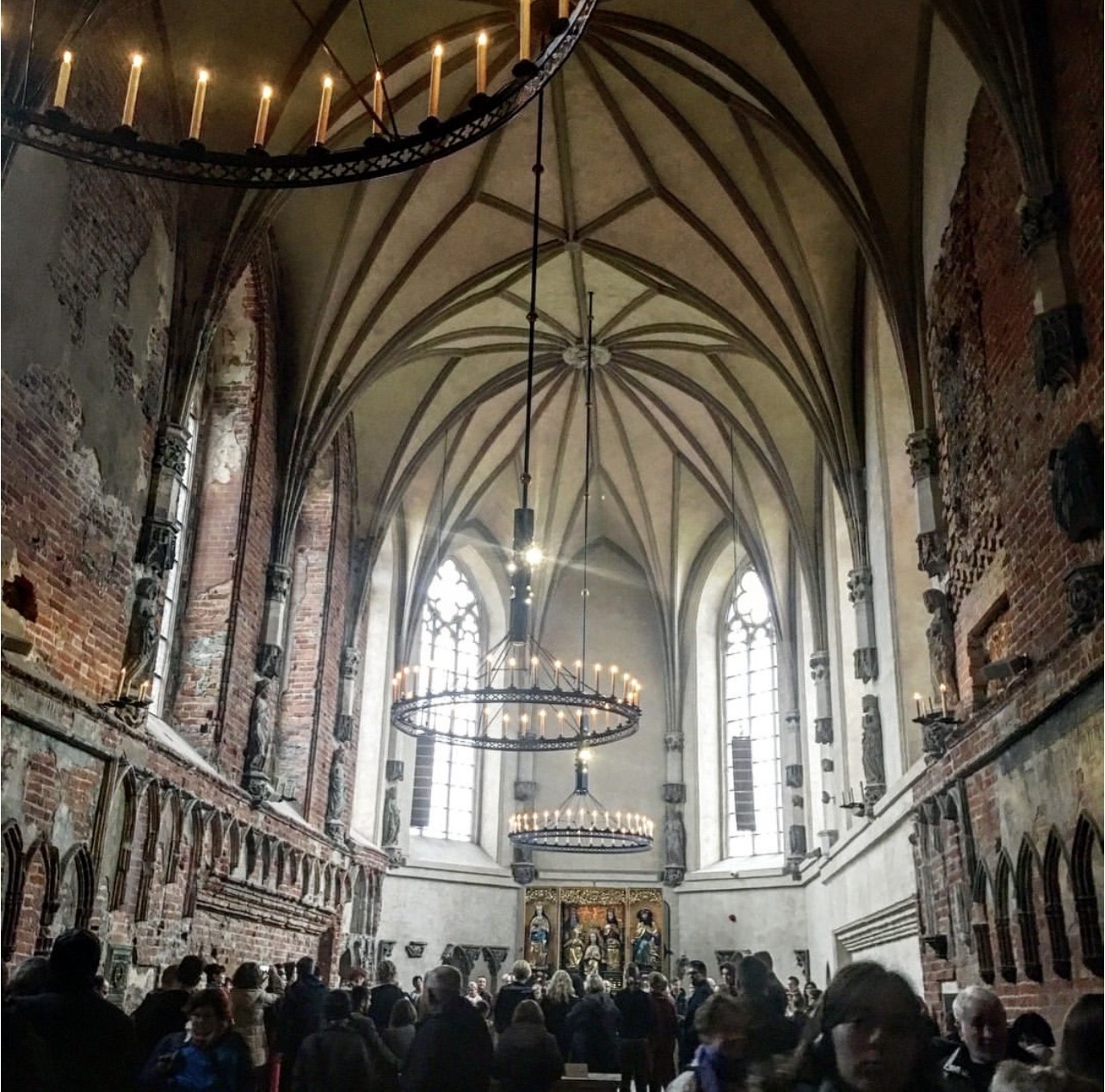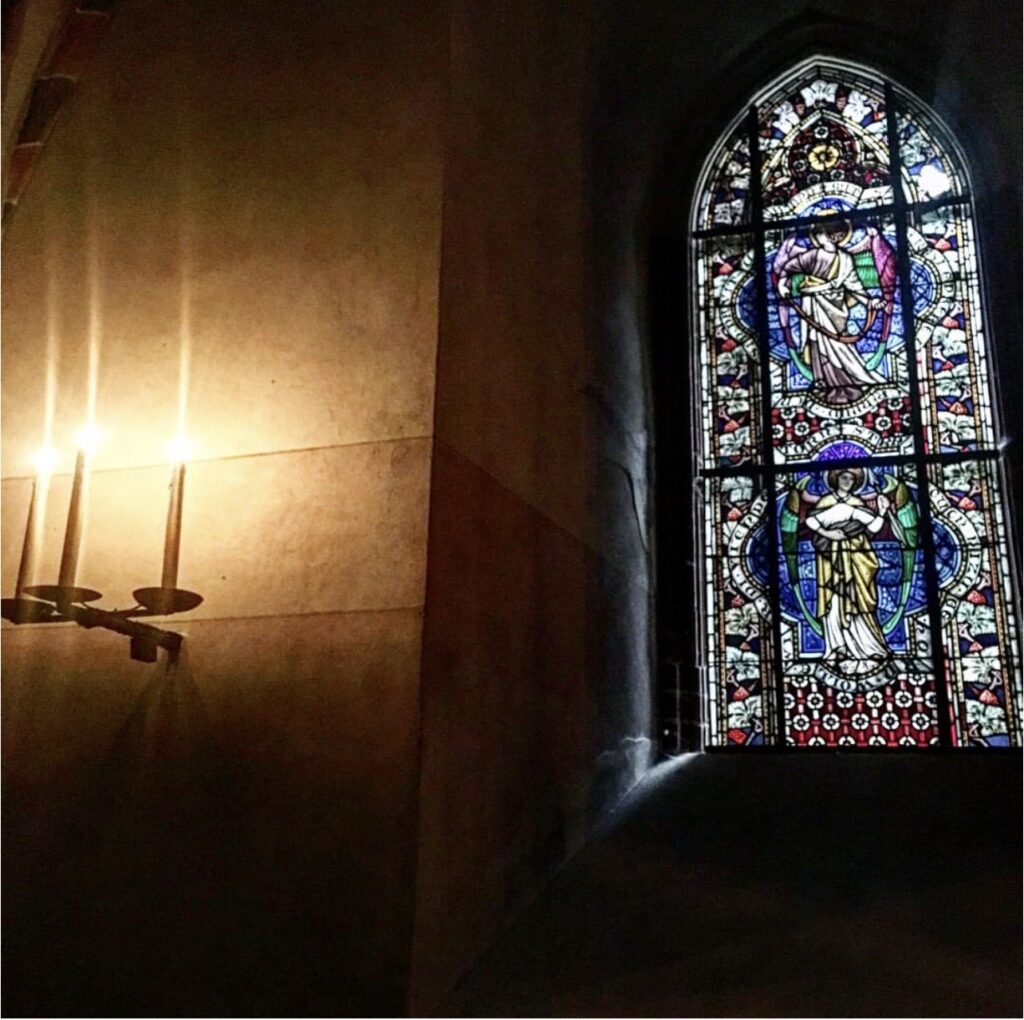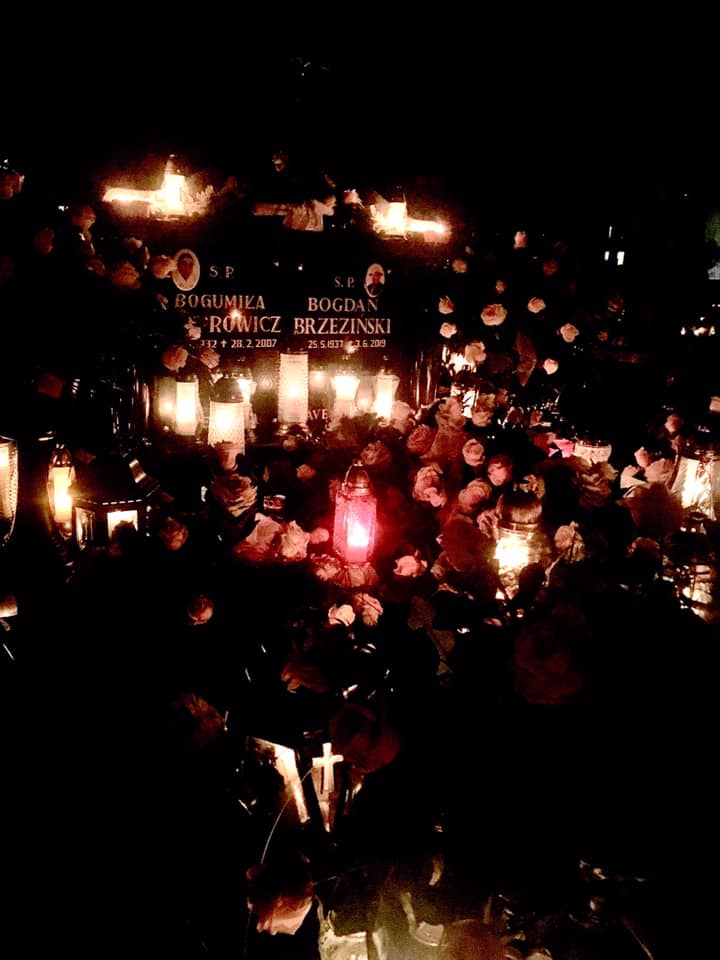Malbork Castle Visitor’s Guide: Tickets, Tours, and What to See
Did you know that Poland is home to one of the biggest Teutonic castles in the world? It’s called Malbork Castle, and trust me, it’s a must-see!
This is a place you’ll want to visit again and again. When family and friends would visit us in Poland, we’d always make the trip from Bydgoszcz to Malbork so they could check this iconic castle off their bucket list.
Whether you’re a history buff, a castle enthusiast, or just looking for a great day trip from Gdansk, you’re in for a treat. Keep reading to find out why Malbork Castle should be at the top of your list!
This Post Pairs Well With:
- The 5 Must-Try Traditional Foods in Krakow Poland
- Nowa Huta: A Soviet-Era District in Kraków You Can’t Miss
- Add this Polish Museum to the top of your List while in Gdańsk: The Solidarity Center
- All Saints’ Day in Poland: A Tradition of Remembrance
- More Polish Content
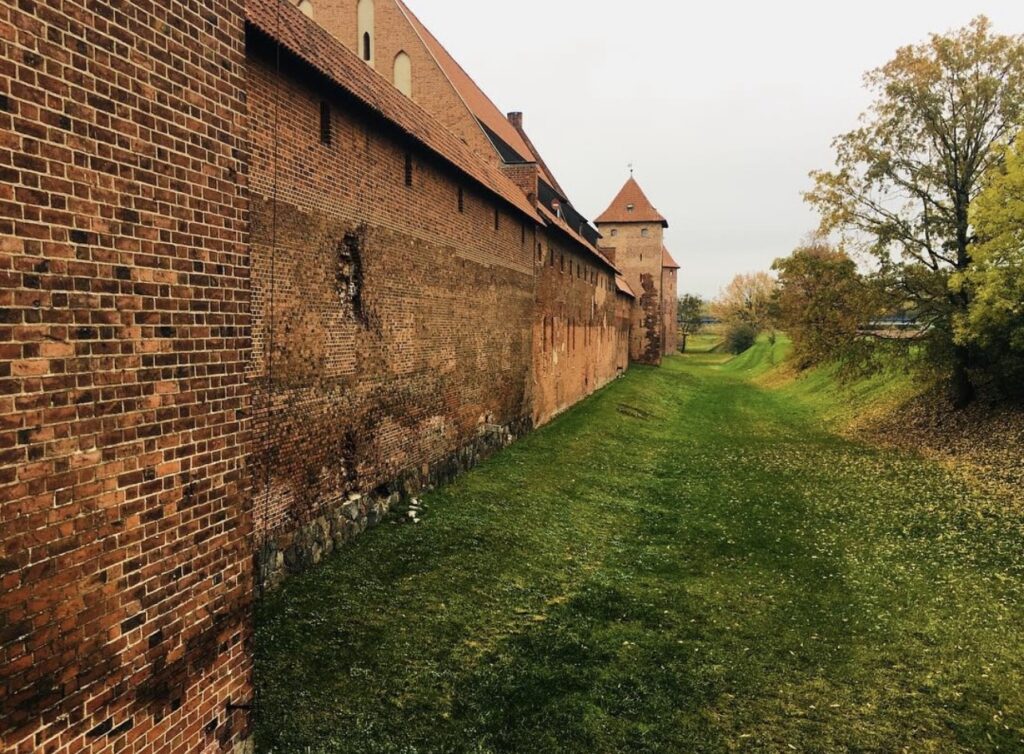
A Glimpse into History: Discovering Malbork Castle
The Birth of a Fortress
Malbork is full of history. Malbork Castle, originally known as the Castle of the Teutonic Order, was constructed in 1274 by the Teutonic Knights, a military religious order that sought to spread Christianity through the Baltic region.
Situated strategically on the banks of the Nogat River, the castle was built as the headquarters of the Teutonic Order. This immense fortress played a central role in the Order’s military campaigns and the region’s governance.
The Teutonic Knights, who came from what is now Germany, fought many battles for control over the Baltic territories.
Malbork Castle served as their stronghold during these turbulent times. It wasn’t just a military fortress; it was also a symbol of their power and influence over the region.
Had I never gone up to Malbork I would have never know about any of this. I find it truly fascinating how much history is in Poland!
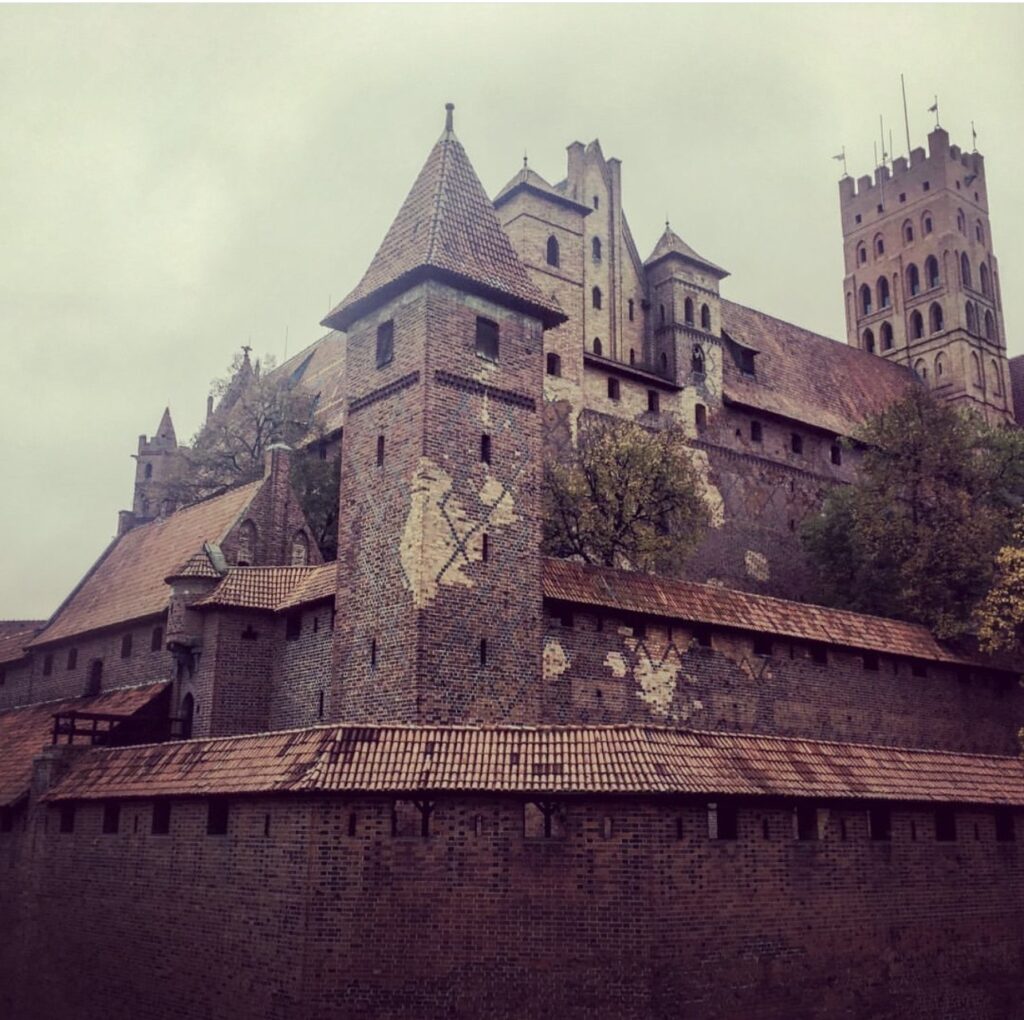
A Shift in Power: The Thirteen Years’ War and how Malbork castle was influenced
Didn’t study history? aren’t to keen on remembering dates? Well I got you!
Over the centuries, the castle saw many changes. The Thirteen Years’ War (1454-1466) between the Teutonic Order and Poland marked a significant turning point. After Poland’s victory, the castle became part of the Polish Crown, signaling the end of the Teutonic Order’s dominance in the region.
The transition to Polish rule brought a new layer of history to the castle, as it became a royal residence for Polish monarchs.
Despite undergoing several sieges, the castle stood resilient and continued to serve as an administrative center.
Restoration and Preservation of Malbork Castle
In modern times, the castle has been the subject of several restoration efforts that have preserved its grandeur. These initiatives ensure that visitors today can experience the castle’s medieval splendor firsthand. Malbork Castle is now a UNESCO World Heritage Site, ensuring that its rich history and architectural beauty will be protected for future generations.

Why Malbork Castle is a Must-Visit
I would love to say because I said so, but that is too obvious. There are so many reasons, and if you are anything like me, you’ll absolutely love visiting this for the history alone. I feel like a lot of places in Poland don’t get the appropriate attention that they deserve, and this is one of those places.
A Symbol of Power and Culture
Malbork Castle is more than just a medieval fortress; it is a symbol of the Teutonic Order’s influence in the Baltic region. Its immense size, intricate design, and historical significance make it a must-visit for history lovers and architecture enthusiasts like you and me.
The castle’s status as a UNESCO World Heritage Site underscores its cultural and historical importance, making it a critical part of Poland’s and Europe’s heritage. A visit to Malbork Castle is an opportunity to walk through time and witness a true architectural marvel that has withstood the test of centuries.
Features of Malbork Castle: Architectural Wonders
Malbork Castle is divided into three main sections, each with its own historical and architectural significance. I have a few of my favorites, and one of them is the High Castle. While I aim to be as descriptive as possible, know that I do NOT want to spoil things. You’ll love it so much more if you experience this one on your own!
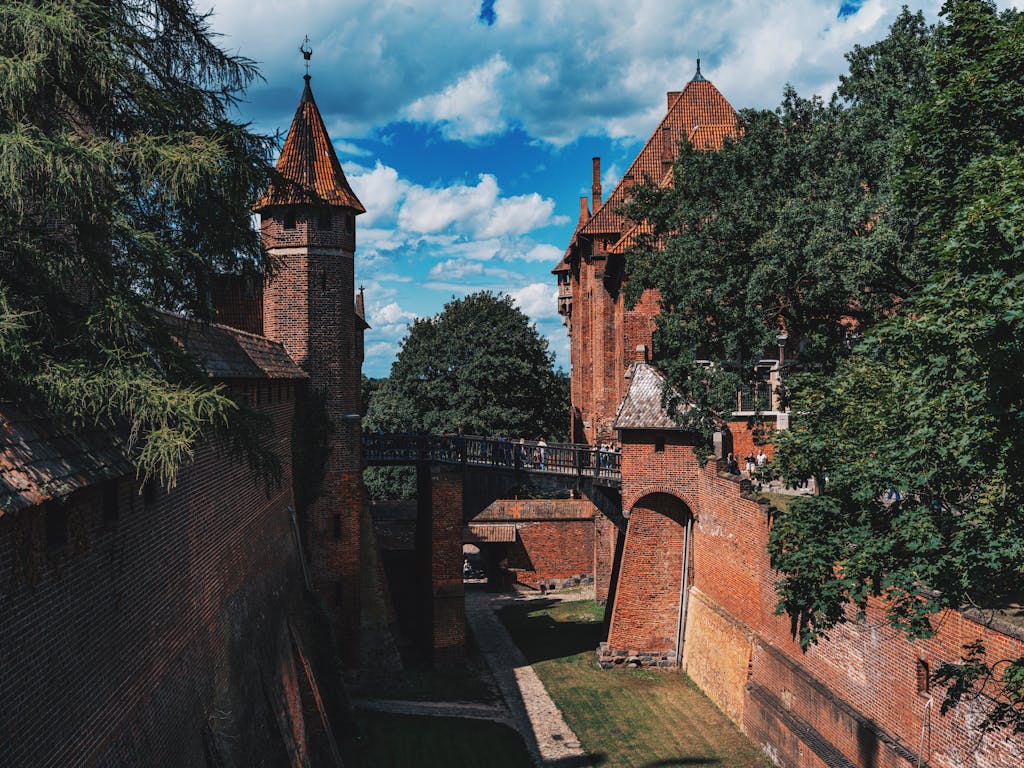
High Castle (Wysoki Zamek)
The High Castle is the oldest part of the complex and houses some of the most impressive structures in the castle. Notable features include the Grand Master’s Palace and the Church of the Blessed Virgin Mary. As my personal favorite section, the High Castle offers breathtaking views and a deep sense of medieval grandeur.
Middle Castle (Średni Zamek)
The Middle Castle was the home of the Grand Master’s residence and is known for its Great Refectory, where the knights would gather for meals. This section also contains various chapels and halls, giving visitors a glimpse into the daily life of the Teutonic Order.
Outer Bailey (Przedzamcze)
The Outer Bailey is the largest section and was home to the more practical aspects of castle life, including granaries, stables, and other facilities that supported the castle’s population. This section also includes the famous Amber Museum, showcasing the region’s rich history of amber craftsmanship.
Visitors can wander through the labyrinth of rooms, turrets, and passageways, each offering a window into medieval life. The castle’s collections of armor, paintings, amber, and historical furnishings add to the immersive experience. enthusiasts.

Tours to Malbork Castle from Gdańsk: My Recommendations
If you’re staying in Gdańsk and want an easy way to visit Malbork Castle, joining a guided tour is a fantastic option—especially if you’re traveling solo and prefer not to navigate public transport.
I found that Viator offers a ton of great group tours that include transportation, a knowledgeable guide, and sometimes even skip-the-line tickets. This can make the trip stress-free and more immersive, as you’ll get fascinating historical insights along the way.
Plus, group tours are a great way to meet other travelers while exploring one of Poland’s most iconic medieval sites.
Check Out the Best Tours Below!
I’ve rounded up some of the best Malbork Castle tours from Gdańsk—browse through the options below to find the one that suits your travel style!
Nearby Attractions:
While Malbork Castle is the main attraction, there are several other noteworthy sites to explore in the area:
- Muzeum w Sztumie: Located in the nearby town of Sztum, this museum offers a fascinating look into the local history and culture of the region.
- Dworzec Kolejowy Malbork: The Malbork Railway Station is a historical gem in itself, with impressive architecture that tells the story of the town’s role as a key transportation hub.
- Malbork’s Old Town: Take a stroll through this charming area to discover quaint shops, cafes, and beautiful historical buildings.
- Nogat River: For a peaceful afternoon, enjoy a walk along the Nogat River. The tranquil waters and scenic views of the castle make it a perfect spot to unwind.
- St. John’s Church: This Gothic church, located near the castle, is another architectural highlight of the area worth visiting.
How to Get Malbork Castle Tickets:
Planning to visit Malbork Castle? Here’s what you need to know:
Operating Hours:
- Mondays:
- Castle Grounds Route: Open from 9:00 AM to 4:00 PM, with the last entry at 2:30 PM. Please note that only the castle grounds are accessible on Mondays; interiors and exhibitions remain closed. zamek.malbork.pl
- Tuesday – Sunday:
- Historical Castle Route: Available from 9:00 AM to 3:00 PM, with the last entry at 1:00 PM.
- Castle Grounds Route: Open from 1:15 PM to 4:00 PM, with the last entry at 2:30 PM.
Ticket Prices:
- Normal Ticket: PLN 35.00 per person (Adults)
- Reduced Ticket: PLN 25.00 per person (Children aged 7-18, students, seniors)
- Family Ticket: Designed for families with children aged 7-18 and one or two guardians. Minimum 1 guardian + 1 child, maximum 2 guardians.
- Normal: PLN 35.00 per person (Adult)
- Reduced: PLN 20.00 per person (Child)
- Large Family Card Holders:
- Normal: PLN 25.00
- Reduced: PLN 20.00
- Children up to 7 years: Free admission; however, you must collect a “0” ticket at the museum’s ticket office.
Ticket Packages: My Experience & Recommendations
One of the things I loved about planning my visit to Malbork Castle was the variety of ticket options available. If you’re a history enthusiast like me, you might want to consider the combined ticket that grants access to three incredible Teutonic castles—Malbork, Sztum, and Kwidzyn.
This pass is valid for 14 days, allowing you to explore each castle at your own pace. I found this to be a fantastic option for anyone looking to dive deeper into the medieval history of the region.
Pomeranian Tourist Card: A Smart Way to Save
Another great way to maximize your visit is by checking if you qualify for the Pomeranian Tourist Card – Metropolia Package.
This card offers potential discounts and benefits, which can be a great money-saver, especially if you’re traveling through the region for a few days. Before my visit, I made sure to check the latest details online to see if I could take advantage of any offers—it’s definitely worth looking into!
Final Tip: Book Early & Enjoy
I can’t stress enough how important it is to book your tickets in advance. Malbork Castle is one of Poland’s most famous attractions, and with a visitor limit of 500 people per hour, tickets can
How to Get to Malbork Castle
It is so easy to get to Malbork from several cities in Northern Poland:
By Train
Malbork Castle is easily accessible from Gdańsk, just about 30-55 minutes away by train.
From Gdańsk Główny, you can catch a PKP Intercity or regional train to Malbork Station. Once you arrive, it’s a short walk to the castle entrance, making it a convenient option for visitors.
If you’d prefer to explore the Polish train system, I recommend visiting the Omio website for ticket details and schedules. It’s very easy to navigate and user-friendly.
I always recommend buying tickets in advance to get anywhere in Poland. I prefer to use the PKP website to book tickets, they even have a mobile app you can download, simply by searching for PKP Intercity on your phone.
Train Options to Malbork from Gdańsk
Regio (R) Trains
This is the slowest and most affordable option for traveling to Malbork. The Regio trains make several stops along the way, with the journey taking between 39 to 55 minutes. Seats are first come, first served, so be prepared for the possibility of standing if the train is full.
You can view the timetable and book tickets in advance on the Polregio website.
TLK Trains
A slightly faster option than the Regio trains, the TLK trains make just one or two stops before reaching Malbork, with a travel time of approximately 34 minutes. These trains are a good middle ground between speed and cost.
You can view the timetable and book tickets in advance on the PKP Intercity website.
EIC Trains
For those who are looking for the fastest option, the EIC trains are the best choice. These trains are direct to Malbork and will get you there in just 28 minutes. However, they are also the most expensive.
You can view the timetable and book tickets in advance on the PKP Intercity website.
Taxi or Walking from Malbork Train Station to Malbork Castle
- Walking: The walk from Malbork Train Station to Malbork Castle takes about 15 minutes. It’s a pleasant, easy walk of roughly 1 kilometer (0.6 miles), crossing the Nogat River and leading you straight to the castle.
- Taxi: A taxi ride from the train station to the castle typically takes about 5-7 minutes, depending on traffic. The cost is usually around 15 to 25 PLN (approximately $3.50 to $6 USD), making it an affordable and quick alternative if you prefer not to walk.
- Taxis are readily available at the train station, and you can also book them in advance if you’d like to ensure a ride when you arrive.
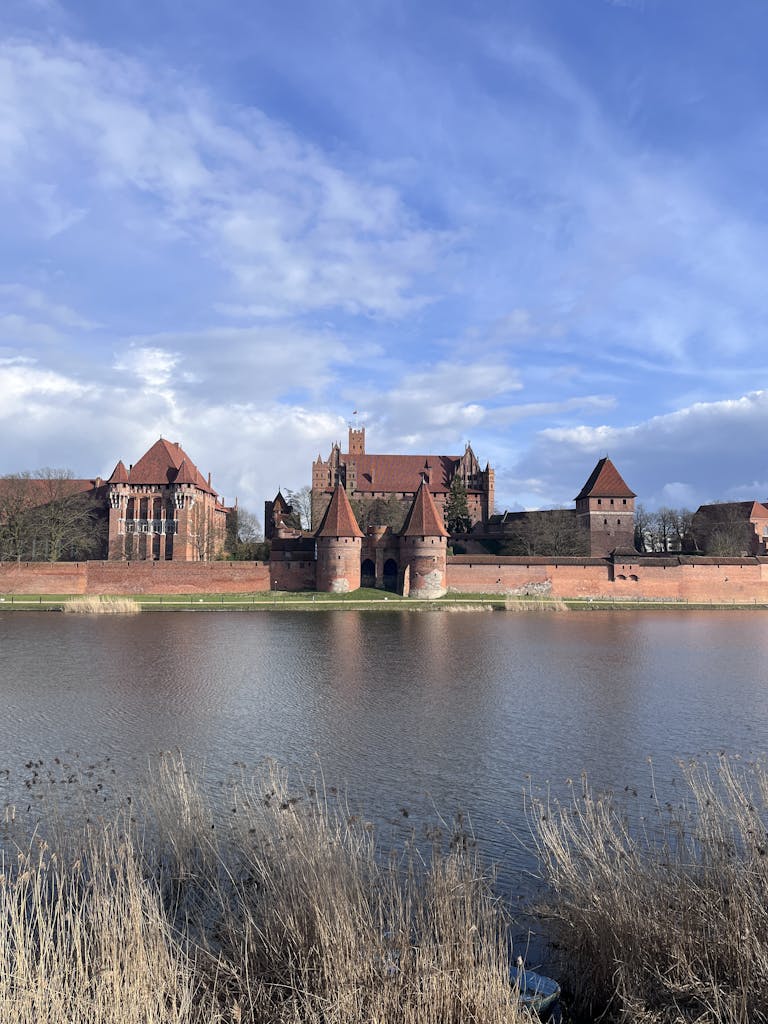
By Car to Malbork Castle
If you’re driving to Malbork Castle, here’s what you need to know:
- Parking: There is ample parking available near the castle, with several parking lots located just a short walk from the entrance. The main parking lot is located directly across from the castle near the Nogat River, making it very convenient for visitors.
- Distance from Parking: The parking lots are typically around 300-500 meters (approximately 5-7 minutes on foot) from the castle entrance.
- Cost: Parking is paid, and the cost is usually around 10 to 20 PLN (approximately $2.50 to $5 USD) for a few hours. Prices can vary depending on the season and parking duration.
So, driving is a convenient option, and you’ll have easy access to parking just a short stroll away from the castle’s entrance!
Don’t have a car? Rent one through rentalcars.com

Where to Stay: Comfortable Accommodations in Malbork
In the off chance you want to stay in Malbork I have you set! While many visitors opt to stay in Gdańsk, Malbork offers a variety of accommodations closer to the castle, allowing for a more immersive experience.
One place our Polish friends recommend is Spichlerz
Spichlerz Malbork
Spichlerz Malbork is a charming and cozy hotel located just a short distance from Malbork Castle, offering a perfect blend of comfort, convenience, and local flair. Housed in a beautifully restored historic granary, this hotel is an ideal choice for those looking to stay in a space that combines traditional architectural elements with modern amenities.
Why Stay Here?
The hotel’s proximity to Malbork Castle makes it a great option for travelers wanting to be within walking distance of the famous landmark. After a day of exploring the castle, guests can retreat to the tranquil atmosphere of Spichlerz Malbork to relax and unwind.
The rooms are spacious and tastefully decorated, featuring a mix of contemporary furnishings and rustic touches that reflect the building’s history. Whether you’re in a single room or a family suite, each space offers plenty of natural light and comfortable bedding for a restful night’s sleep.
Features & Amenities:
- Historic Charm: The hotel is located in a former granary, providing a unique and atmospheric setting with plenty of character.
- Modern Comforts: Rooms are equipped with air conditioning, flat-screen TVs, free Wi-Fi, and private bathrooms for a comfortable stay.
- Restaurant & Bar: The hotel boasts an on-site restaurant where guests can enjoy delicious Polish cuisine, including traditional regional dishes. The cozy bar is perfect for an evening drink after a day of sightseeing.
- Private Parking: If you’re traveling by car, Spichlerz Malbork offers private parking for guests, making it an easy choice for those exploring by road.
- Convenient Location: Just a short walk from Malbork Castle, the hotel also provides easy access to the town center, where you can explore local shops, cafes, and restaurants.
Perfect for:
- Couples looking for a romantic getaway with a historic touch.
- Families in search of spacious accommodations close to the castle.
- History enthusiasts who appreciate staying in a property with local historical significance.
Whether you’re visiting Malbork for the first time or returning to explore more of its medieval charm, Spichlerz Malbork offers a welcoming and peaceful retreat to enhance your stay.
Nearby Hotels in Gdańsk
For those who wish to stay in Gdańsk and commute to Malbork, there are a variety of options, including boutique hotels and large chains. Gdańsk offers a wider range of dining and entertainment options if you prefer a more urban environment during your stay.
Practical Travel Tips for visiting Malbork
What to Wear
Alot of your visit will be outdoors, I recommend wearing comfortable shoes for walking around the castle grounds. In winter, the cold winds can make it feel even colder, so layers and a warm jacket are essential. Summer months can be warm, but the castle’s stone walls provide some shade.
Accessibility
Listen up! Malbork Castle is partially accessible to visitors with limited mobility, but due to its medieval design, some areas might not be suitable for those with wheelchairs. It’s advisable to check ahead or contact the castle’s visitor services for more detailed information on accessibility.

When is the Best Time to Visit Malbork Castle?
In my opinion, the best season to visit Malbork would be the springtime. I visited several times during the winter and during the spring. I have to say that springtime was definitely my preference, but I know many people can’t choose when they can visit due to jobs and taking time off.
Spring (March to May)
Spring is a wonderful time to visit Malbork Castle as the weather begins to warm up, and the gardens and surrounding areas start to bloom.
The crowds are also thinner compared to the summer months, allowing you to explore the castle more leisurely.
April and May tend to have mild temperatures, making it ideal for outdoor exploration without the overwhelming heat.
It’s also a great time for photography, as the vibrant spring flowers contrast beautifully with the castle’s stone structures.
Summer (June to August)
Summer is the most popular time to visit Malbork, as it offers the warmest weather and longer days, giving you more time to explore. However, it also means more tourists, especially in July and August.
If you don’t mind the crowds and want to experience the castle at its liveliest, this is the perfect season for you.
Many outdoor events, like medieval reenactments and festivals, take place in summer, adding an extra layer of excitement to your visit. Be sure to arrive early to beat the midday rush and avoid the hottest hours of the day.
Autumn (September to November)
Autumn brings a magical transformation to the castle, with the surrounding trees bursting into rich reds, oranges, and yellows. The crowds have thinned out after the summer rush, making it easier to enjoy the sights without feeling overwhelmed.
September is particularly lovely, with mild weather and fewer tourists.
As you move into October and November, the weather can be cooler, and occasional rainfall may occur, but this adds to the moody atmosphere of the castle. If you don’t mind the chill, visiting during autumn will offer a more peaceful and reflective experience, with the castle’s medieval architecture against the autumnal landscape providing plenty of photo opportunities.
Winter (December to February)
Winter at Malbork Castle is a unique experience. Although temperatures can drop significantly and snow is a possibility, this off-season offers a quieter and more intimate visit. The castle looks stunning with a dusting of snow, and the Christmas market in Malbork is a great way to experience the local culture. If you prefer solitude and don’t mind the cold, winter can be the best time for a more personal experience of the castle, though you should check ahead as some parts of the castle might have limited hours.
Conclusion
Visiting Malbork Castle was an experience I’ll never forget, and I think it’s something everyone should do at least once. The sheer size and history of this place are awe-inspiring!
Whether you’re into medieval architecture, rich history, or just love exploring beautiful places, Malbork has it all. With a little planning—like checking the opening hours, buying tickets in advance, and knowing how to get there—you’ll make the most out of your visit. Trust me, it’s worth every step! Just take your time, enjoy the stunning views, and let yourself be swept up in the story of this incredible castle.

